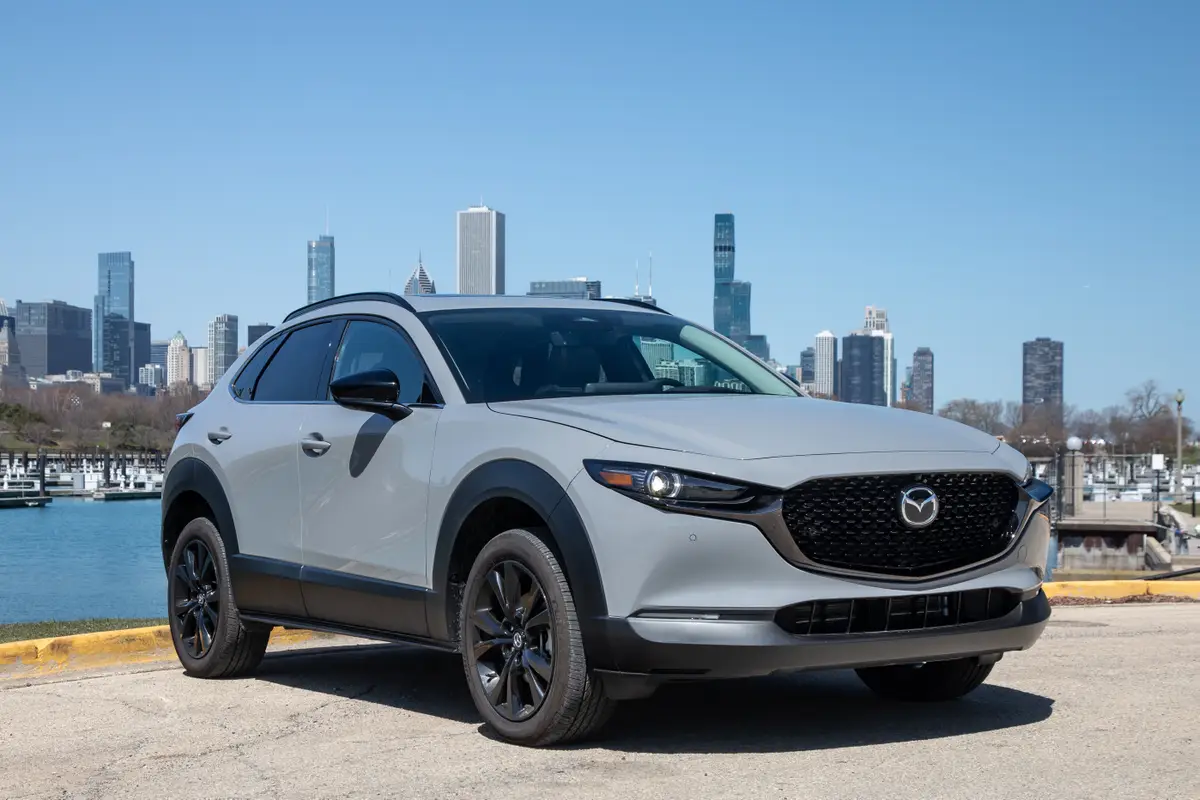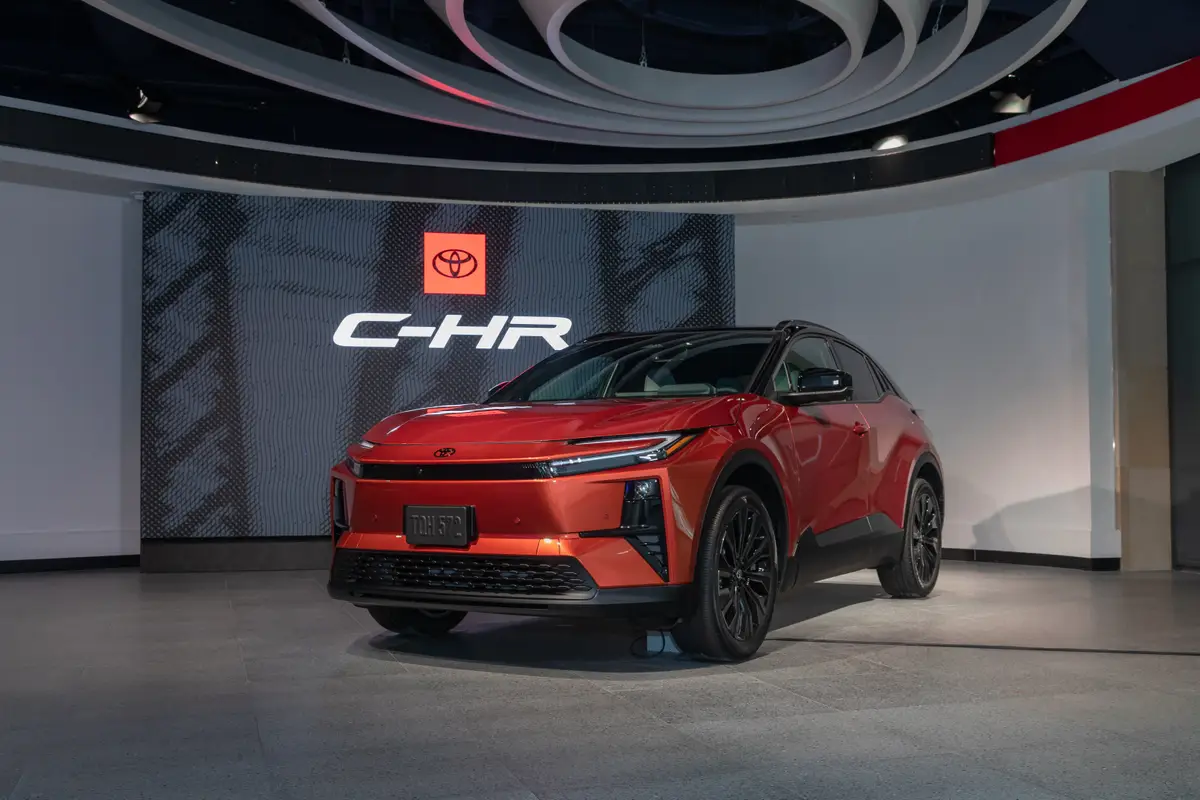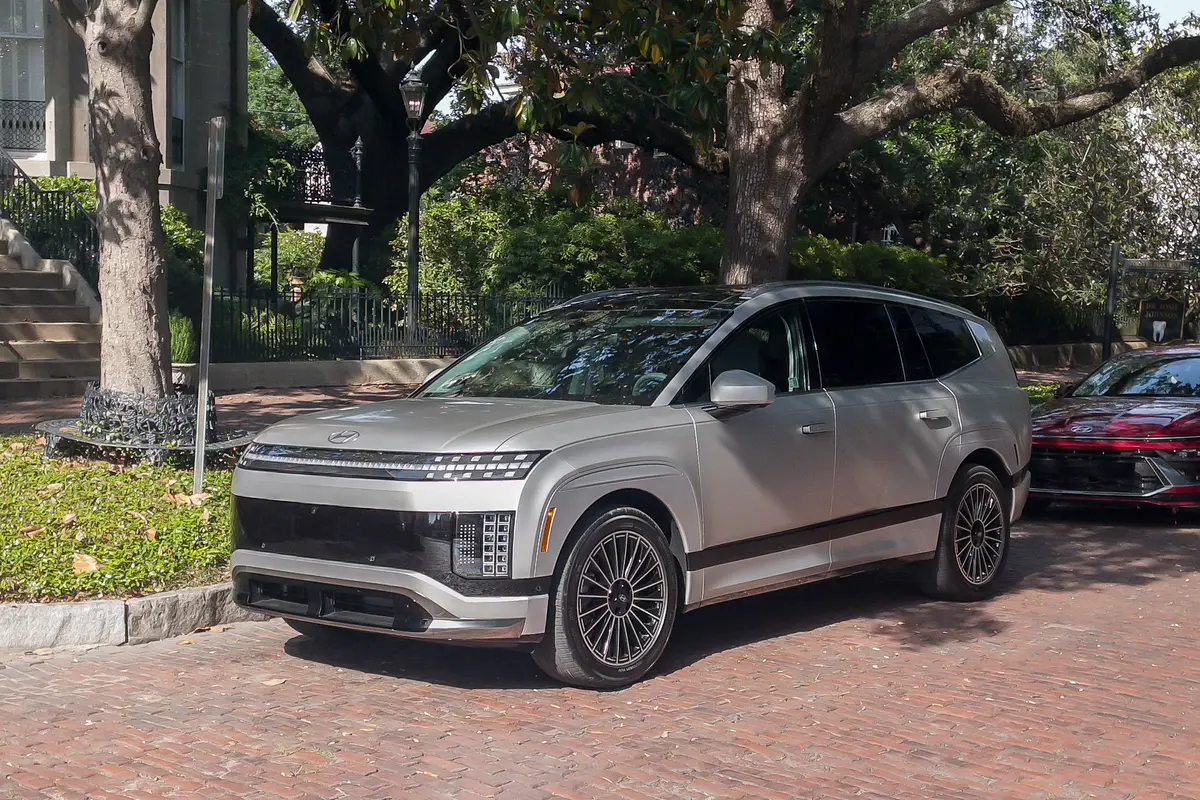2004 Jaguar XJR: What's New
Vehicle Overview
The seventh generation of Jaguar’s rear-wheel-drive luxury sedan was originally unveiled in concept form at the Paris Motor Show in September 2002. The 2004 XJ is longer, taller and wider and rides a longer wheelbase than its predecessor. The new XJ delivers greater headroom, legroom and shoulder room in all seating positions.
New aluminum-intensive construction promises high strength, robustness and dynamic ability. Even though the new XJ is 60 percent stiffer than its predecessor, its bodyshell is about 40 percent lighter than an equivalent steel body. Its curb weight is about 440 pounds less than the prior XJ. The body structure features rivet-bonded joining technology with self-piercing rivets and aerospace-sourced epoxy adhesive, which Jaguar claims is an industry first for a mass-produced automobile.
Advanced technologies include Dynamic Stability Control, Jaguar’s Adaptive Restraint Technology System and Adaptive Cruise Control with forward alert. Jaguar’s normally aspirated 4.2-liter V-8 engine powers the regular XJ8 and posh Vanden Plas; that engine is supercharged in the high-performance XJR.
Sales began in late spring. About 15 percent of XJ sedans are expected to be the XJR.
Exterior
The doors are noticeably deeper in relation to the glass on the prior XJ. Overall, the new sedan has a slightly more cab-forward profile, with its wheels brought closer to the corners. The front overhang has been reduced significantly, and the windshield isn’t as raked as before. Even though it is smaller, the hood retains its characteristic sculpted shape and is easily recognizable as an XJ. The headlights are now oval shaped and are grouped together in the classic quad configuration. The headlights flank a fresh grille made up of intersecting vertical and horizontal bars – a design that is inspired by the original 1968 XJ grille.
A self-leveling air suspension and Jaguar’s Computer Active Technology Suspension system are standard. The suspension lowers the car automatically at highway speeds to improve stability. All XJ models are 200 inches long overall on a 119.4-inch wheelbase. It stands 57 inches tall.
Interior
Like its predecessor, the 2004 XJ sedan seats five occupants, but a higher roofline helps increase interior space markedly – up 40 percent, according to Jaguar. Power front seats can include cushion-length adjustment and four-way lumbar support. A full-power bench seat will be available for those who don’t care for the standard bucket seats. Adjustable pedals complement an electronically adjustable steering column, and an electronic parking brake is installed. Interior-finish choices include traditional burr walnut and gray-stained maple veneer, as well as new Piano Black trim that’s inspired by the deep, lustrous sheen of a concert grand piano. The trunk’s space has increased by 25 percent.
JaguarVoice, a voice-activated control system for phone, navigation, audio and climate functions, is optional. “You don’t have to be a computer expert to operate the new XJ,” says Chief Program Engineer David Scholes. “Our customers are emphatic in their opposition to gratuitous technology and unwanted features.”
Under the Hood
In normally aspirated form for the XJ8 and Vanden Plas, Jaguar’s 4.2-liter V-8 engine produces 294 horsepower and accelerates from zero to 60 mph in a claimed 6.3 seconds. Beneath the XJR’s hood is a supercharged 390-hp version of that V-8, which leaps from zero to 60 mph in 5 seconds. Gas-mileage ratings have improved, especially for highway driving.
Safety
In addition to an occupant-sensing system for the front passenger seat, the XJ has standard side thorax and full-length side curtain-type airbags. Four-channel antilock brakes incorporate Emergency Brake Assist. Traction control is complemented by Dynamic Stability Control, which intervenes if sensors indicate that the sedan is at the limit of its grip. Reverse parking assist is also standard.
Driving Impressions
Automobiles can’t get much more elegant than the XJ. Even if the XJ’s rivals approach technical perfection, they simply can’t match Jaguar’s panache.
The XJ is effortless and enjoyable. These cars are a good deal more fun on the road than nearly any large sedan. Driving enjoyment is augmented by genteel comforts inside and a smooth, refined powertrain. Acceleration when passing and merging falls short of ferocious, but civilized responses make up for any lack of all-out performance. Downshifts on upgrades are not instantaneous, but qualify as easygoing.
Even though the XJ is very quiet, you can hear the lush exhaust note that turns close to a snarl when pushed hard. These sedans take corners well, but body lean is noticeable. The suspension absorbs the vast majority of trouble spots. Front passenger space is abundant, but some of the controls are not intuitive.
No less posh or civilized than its XJ8 and Vanden Plas companions, the XJR sedan adds an extra helping of vigor to an already-appealing road machine. Acceleration is super smooth when passing or merging, which also produces a satisfying burst of welcome energy. This car doesn’t feel dramatically faster than a regular XJ.
The XJR’s supercharger whine is rather loud, yet pleasing to the ears. Added tautness of the XJR suspension is evident, but it doesn’t impair ride quality too much. You still get a lovely road experience with a little extra touch of stiffness and greater control.
It’s likely that many drivers will be content with a non-supercharged model, but the difference is most noticeable when comparing pickup from a standstill.
Featured stories

2025 Mazda CX-30 Review: Pushing Toward Premium



2026 Hyundai Ioniq 9 Review: A Worthy Flagship EV

